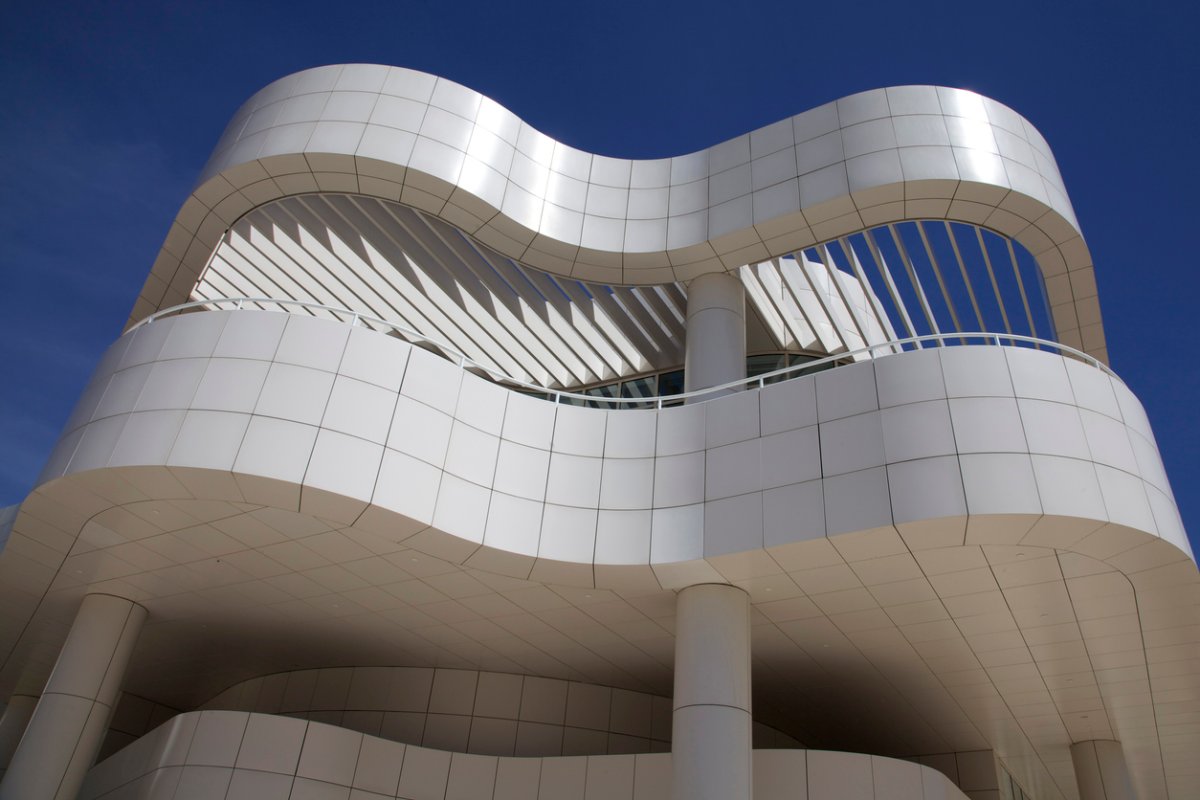We may earn revenue from the products available on this page and participate in affiliate programs. Learn More ›
Travertine—a variety of limestone formed from calcium carbonate deposits in or near hot springs or limestone caves—is one of the most popular types of stone used in architecture, and has been for centuries. In fact, the Colosseum in Rome is almost entirely built of travertine and is the largest such building in the world. The Getty Center in Los Angeles (pictured above), which opened in 1997, is a modern take on travertine; the inner and outer surfaces of its buildings are clad in 1.2 million square feet of this beautiful stone.
Today, travertine is prized as a durable, elegant material for residential applications, too, including flooring, countertops, backsplashes, shower and tub surrounds, fireplace surrounds, outdoor pavers for patios and walkways, and around swimming pools. Unlike granite and marble, travertine has a naturally weathered look that suits both casual and formal decorating styles.
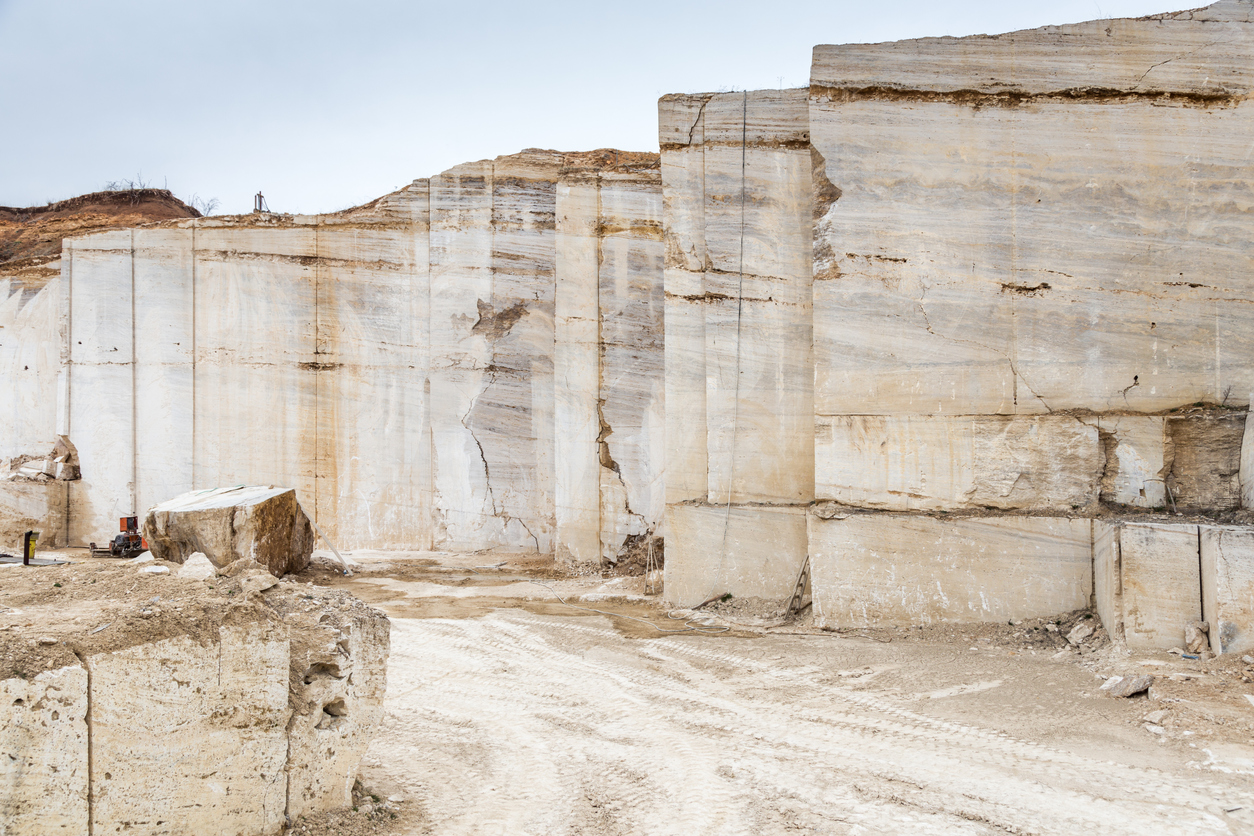
The largest travertine quarries are in Italy, but the stone is also found in Turkey, Peru, Mexico, Croatia, Iran, China, Yellowstone National Park in Wyoming, and elsewhere throughout the world. Like all natural materials, travertine has advantages and disadvantages that should be taken into account before you incorporate it into a renovation.
If you’re considering this stone for your home and are weighing it against marble and granite, read on to learn what to expect from travertine in terms of appearance, maintenance, and cost.
Travertine colors range from warm- to medium-toned neutrals.
You’ll find travertine pavers, slabs, and tiles in soft and warm neutral hues, including ivory, gold, beige, brown, rust, and peach. Typically, the color swirls and waves throughout the stone, creating unique patterns that give travertine its timeless beauty.
What you won’t find with travertine are boldly colored blotches and freckles, a trait common to granite, or strongly contrasting dark veins on a lighter background, which is characteristic of marble. Instead, most travertine has tone-on-tone coloration and patterns that are far more understated than those other popular stones.
Travertine also differs from granite and marble in that its surface is characteristically slightly pitted with small holes and indentations caused by the bubbling of carbon dioxide up and out of the stone during its creation near natural hot pools. While these holes give travertine its rustic appearance, they tend to gather dust and debris when used as countertops or flooring. For this reason, travertine’s holes are often filled with an epoxy mixture that’s then sanded down evenly with the surface of the stone.
This filling makes the travertine tile smooth and easier to clean without diminishing its desirable weathered look. Some homeowners choose to leave the holes and indentations unfilled when they install travertine on a vertical surface, such as a backsplash or fireplace surround, to achieve a more aged, rugged appearance.
RELATED: 5 Types of Tile Worth Considering in Your Next Renovation
Travertine’s finishes range from matte to shiny.
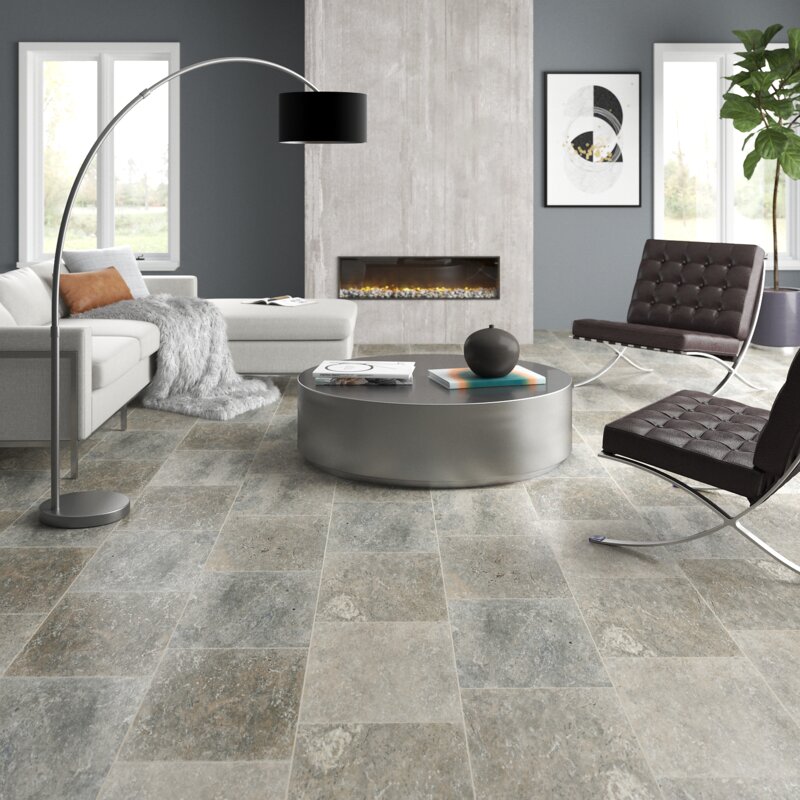
Once travertine has been quarried, it’s generally finished in one of four ways for decorative use in homes and commercial settings.
- Polished travertine: This finish is the most modern and elegant. Its natural holes and crevices are filled before polishing begins, and then the surface of the travertine is buffed until it is smooth and shiny. Because polished travertine tends to be slippery when wet, this isn’t a good finish for bathrooms, kitchens, or around swimming pools. It has a high-end and luxurious look, however, that’s perfect for entryway floors, counters, backsplashes, and tub surrounds.
- Honed travertine: This is the most popular finish for residential use. When travertine is honed the holes and crevices of the stone are filled, and the stone is then sanded on one side to produce a smooth, almost-matte finish that suits virtually any decorating style. You can use honed travertine as flooring throughout the home, for countertops in the bathroom or kitchen, and on walls, backsplashes, and fireplace surrounds. It also works as an outdoor finish.
- Tumbled travertine: Put travertine tiles in a large tumbler with small stones, tumble gently, and you get the most weathered and rustic finish, ideal for Mediterranean, Spanish, Tuscan, or other Old World decor. With its matte, heavily textured surface, tumbled travertine tile is good for outdoor flooring, as well as wall insets, shower or tub surrounds, and fireplace surrounds. Because it is so textured, however, this isn’t a suitable finish for countertops or indoor floors.
- Brushed travertine: The least common finish, brushed travertine has been slightly smoothed with a wire brush, leaving a surface with more texture than honed travertine, but not quite as textured as tumbled travertine. It’s a rustic and weathered finish that suits casual or Old World decorating styles. Use brushed travertine anywhere you’d use tumbled travertine.
Travertine tile is very durable.
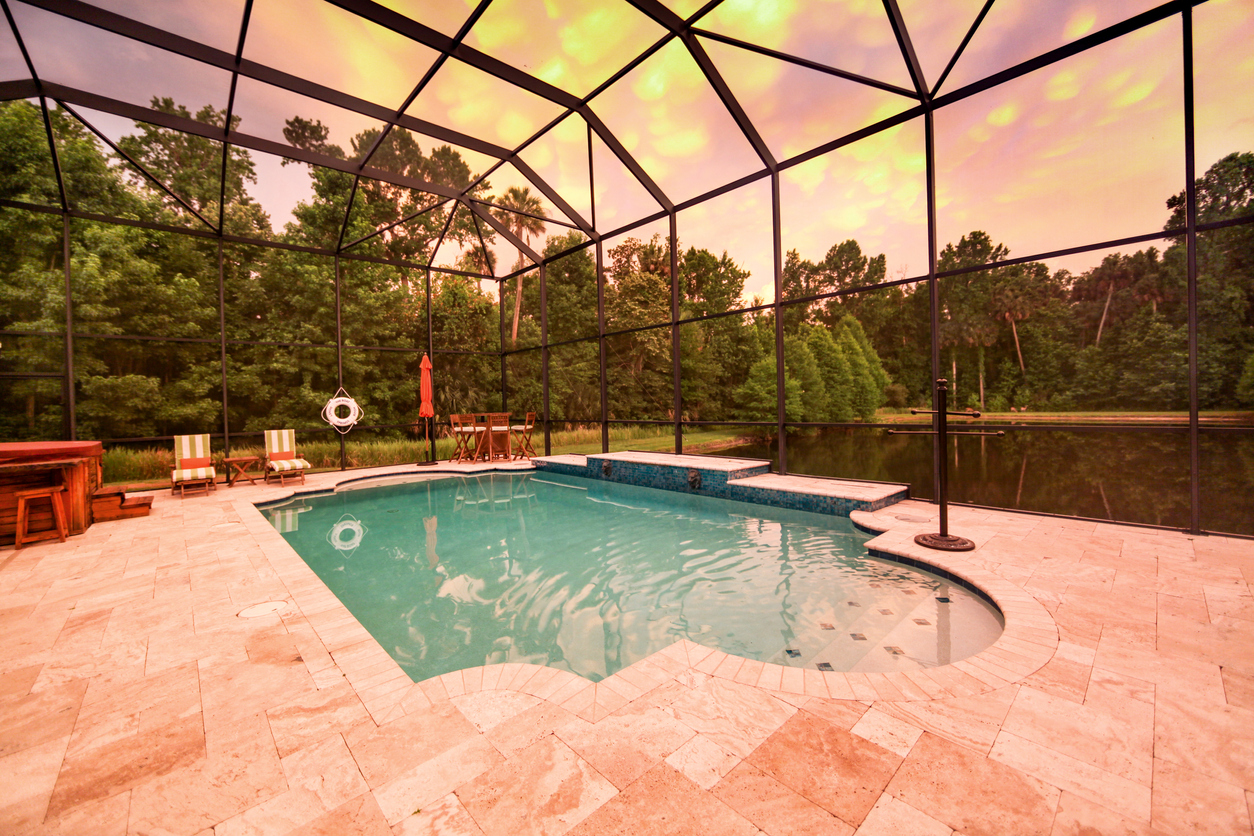
Although it’s not as hard as marble or granite, travertine is still a very durable stone. It stands up well to foot traffic and isn’t likely to crack in extreme temperatures, although a tile might crack if it is struck with something heavy. While travertine is somewhat susceptible to scratches, these are less likely to show on honed or tumbled travertine than on polished stone.
To avoid damage, never drag heavy furniture across travertine tile floors, and sweep up sand or other gritty substances tracked in by pets or shoes right away.
Given enough time and exposure to the elements, travertine tends to wear and age, but for many homeowners, that’s a plus. While many homeowners like to leave travertine—particularly travertine used in outdoor applications—unsealed to allow weathering, regular applications of sealer can keep your stone looking new, if that’s your preference.
RELATED: The Best Furniture Sliders
Travertine tiles are prone to staining and etching.
Because it’s porous, travertine easily absorbs liquids, grease, and oils, leaving stains to mar the stone’s surface. It’s also prone to etching—a chemical reaction that eats away at the stone—from acidic substances, including wine and other alcohols, vinegar, coffee, tomato juice or sauce, and citrus juices. Bleach and ammonia can also cause etching on travertine. While polished travertine has some natural resistance to stains and etching, a lingering spill is still likely to leave a mark.
To stave off stains and etching, suppliers treat most travertine with a protective sealant that’s specifically formulated for natural stone, such as Miracle Sealants 511 Porous Plus. It’s a good idea to reapply the sealant every 3 to 5 years. The process is easy: Simply wipe or buff the sealer onto the stone with a rag or lamb wool applicator, wipe away excess, let the sealant dry, and then repeat with a second coat.
A travertine tile backsplash is a rustic but easy-care addition to a kitchen.
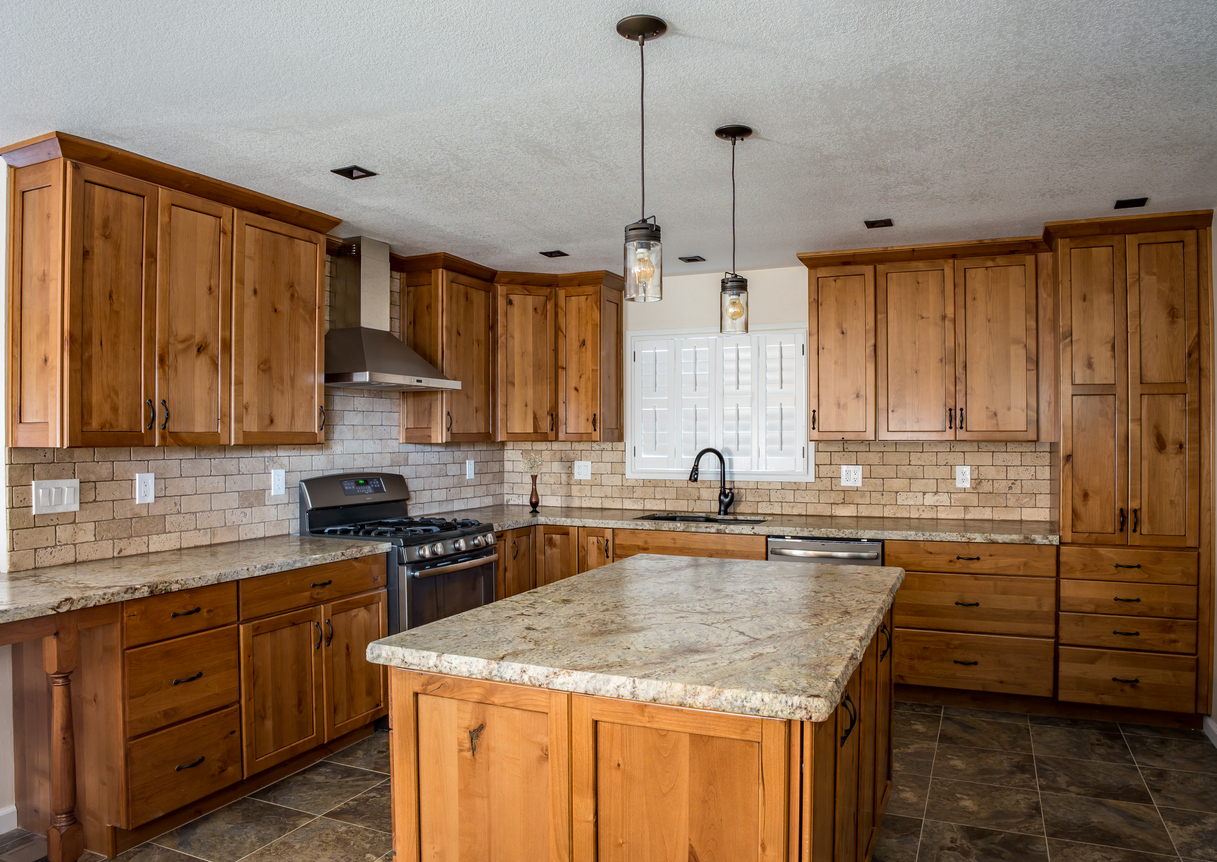
With its warmth and natural finish, travertine can give your kitchen a Mediterranean look. In fact, it can add so much rustic charm that you can extend your backsplash to cover a larger area—even an entire wall. Doing so won’t add to your maintenance much. In all, it is easier to maintain travertine tile than to care for marble or granite. Weathering can actually improve travertine’s finish.
Buyers can choose from among a variety of travertine colors and finishes to create a stunning focal point or a warm backdrop for less money than some similar materials. Even if you aren’t going for a Tuscan feel, you can add a travertine tile backsplash to complement nearly any style. Travertine is a porous material, so when you use it as a backsplash, be sure to follow recommendations for periodic sealing.
Basic care will keep your travertine floors and surfaces looking good for decades.
Follow these easy tips for how to clean travertine tile, floors, surrounds, and countertops:
- Sweep travertine tile floors at least once a week to remove any grit that could potentially scratch the stone. Mop weekly or as needed to clean up messes with a barely wet microfiber or cloth mop, using a cleaner specifically formulated for stone floors, if desired.
- Protect travertine countertops with coasters, hot pads, or trivets to help absorb drips. Don’t cut directly on your stone countertop; instead, use a plate or cutting board. Clean the counters with a slightly damp microfiber cloth as needed. If a little more cleaning power is required, use a product made for stone or a gentle liquid dishwashing solution. Never use vinegar, bleach, or ammonia to clean natural stone counters.
- Use a squeegee to wipe water off your travertine shower surround after every use. Every week or two, spray the stone with a soap-scum remover that doesn’t contain harsh bleach or ammonia; choose a product that indicates it is safe for use on natural stone.
- Wipe up spills right away on any travertine surface.
- Wipe soot from your travertine fireplace with stone cleaner whenever it accumulates, and dust it regularly to keep charcoal from setting into the stone.
Travertine is more affordable than you might think.
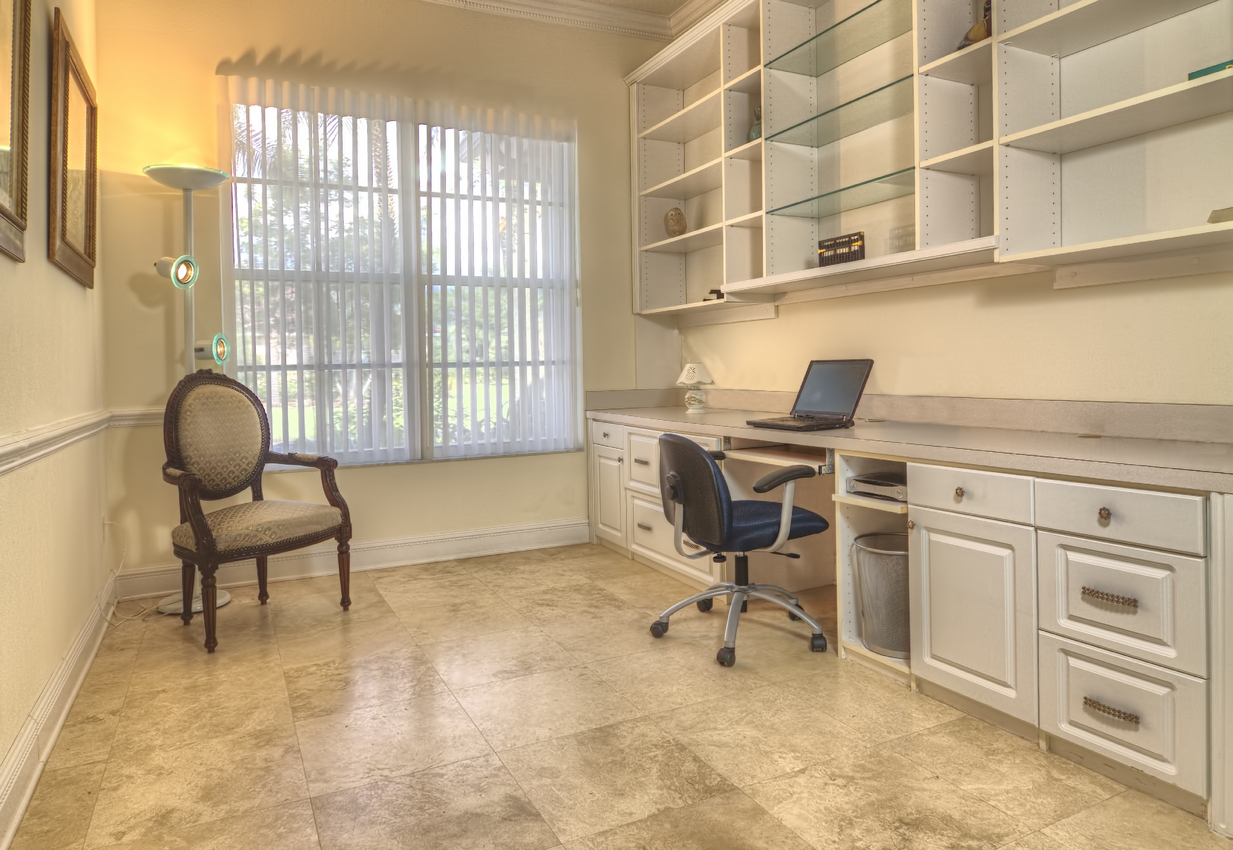
While natural stone of any type isn’t the least expensive material for floors or countertops (that would be carpet or vinyl), as a general rule, travertine costs less than granite or marble. Prices vary greatly depending on where you live, the size and complexity of your project, the quality of the travertine, and the finish you choose, but you can expect to pay an average of $15 to $30 per square foot. By contrast, you will typically pay nearly double that for marble, and slightly more for granite.
Final Thoughts
Coming in a range of colors and looks, travertine can be an affordable and attractive option for all sorts of surfaces. Choose to show the natural pitting or select a more polished finish to add to the stone’s versatility.
The material also is durable and its look can even improve with a little weathering. Travertine is prone to etching, however, so be sure to use appropriate cleaners and periodically apply a sealant to prevent etching.
FAQs About Travertine Tile
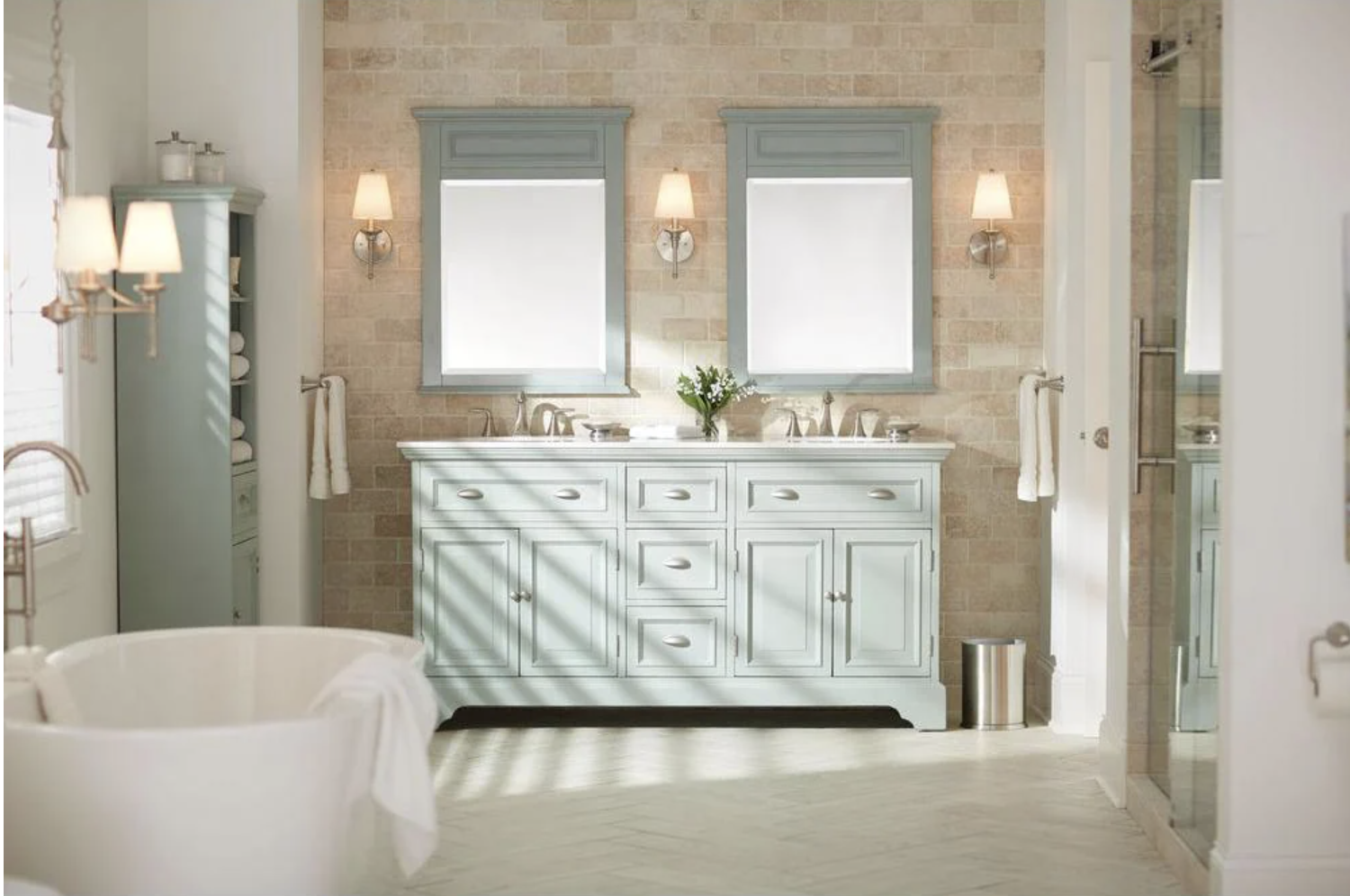
Still have some questions about choosing or caring for travertine tiles? Read on for answers to some of the most common queries.
Q: What is travertine flooring?
Travertine is a natural stone, specifically a type of limestone that forms in mineral spring deposits. It is more porous and less dense than other limestones. Travertine flooring comes in tile form, typically in a variety of earth tones.
Travertine tiles have a characteristic pitted or rough surface in its natural form, but you can choose from among several finishes to alter the look for a room’s style. Travertine flooring is highly porous and most finishes require periodic sealing to prevent stains and etching.
Q: What are the pros and cons of other types of limestone vs. travertine?
Travertine is not as dense as limestone and is more porous. Its ability to absorb water better ranks it as a favorite outdoor deck or patio surface in some climates. However, limestone is tougher, especially when exposed to weather extremes. Indoors, limestone might hold up better to heavy traffic. Otherwise, the two materials are fairly equal in appearance, maintenance, and use for flooring, surrounds, and backsplashes.
Q: Is travertine stone expensive?
Travertine stone and limestone require similar expense, but both cost less to install than marble or terrazzo tiles. Travertine flooring costs can range from $15 to $30 a square foot, and the material is considered a mid-range choice among floorings of all types (laminate costs less than any stones, for example). The finish you choose can affect the cost, so be sure to inquire about choices and their prices when selecting your favorite travertine tile.
Q: Does travertine always need to be sealed?
To resist staining and etching, travertine tile will hold up better if sealed. If you choose a polished travertine finish, it is nearly stainproof initially, but might require a polishing protector. The polished stone might not absorb sealant—which means it won’t absorb stains—so it does not need sealing if it repels water.
Be sure to follow the recommendations of the supplier and installer to care for your polished travertine in particular. Any honed or tumbled travertine tile installed in a kitchen or other high-use area needs sealing every few years to resist stains and etching.
